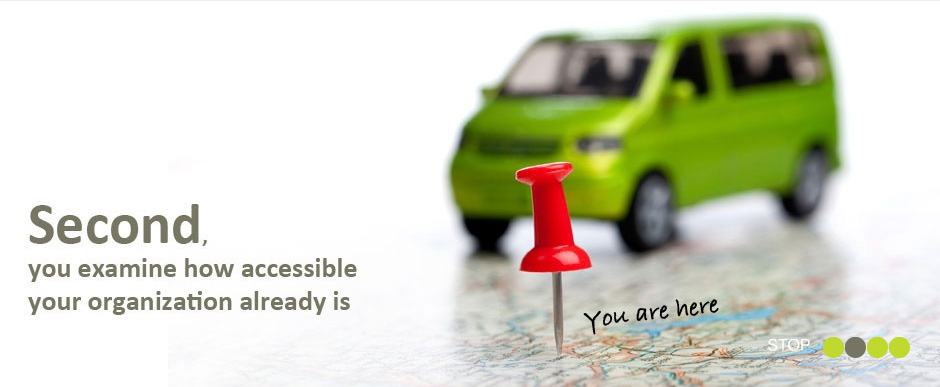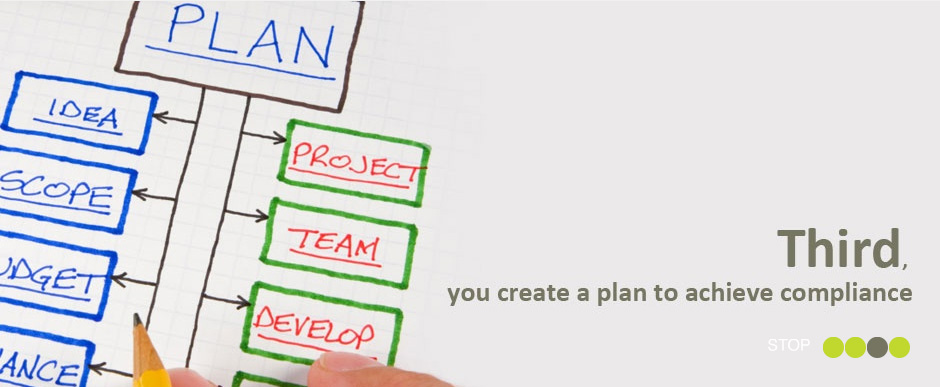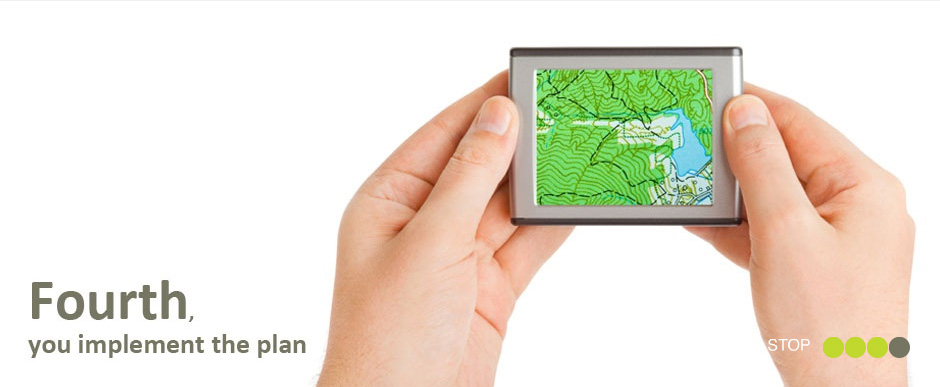Accessibility Tools and Tips
Introduction
Removing barriers to accessible customer service begins with education, confidence and a positive, helpful attitude on all of our parts. This section of our site aims to help you provide your goods and services to people with disabilities in ways which foster their independence, maintain their dignity and provide an equal opportunity.
We realize that in the course of performing your daily duties at work, you may face regular challenges projecting a friendly, positive company image with every customer you greet. We also appreciate that when first encountering a customer with a disability, you may feel a little uncomfortable. This is only natural. In fact, people with disabilities may also feel uncomfortable as they communicate their needs in a busy, fast-paced environment.
People Access, a division of Excellence Canada, hopes our guide will help both groups to feel more relaxed while communicating with each other.
This page of tips and tools is designed to assist client-facing staff and other employees when providing customer service to people with disabilities. Click on the type of disability below, for quick and easy reference.
We begin with some general tips on issues affecting accessibility.
Excellence Canada – Ontario Accessibility Award Program
You can do more than comply with the AODA Customer Service Standard—you can go above and beyond to receive national recognition with an Excellence Canada – Ontario Accessibility Award.
Contact us today to learn how to apply for this award, and become an AODA role model in your community, in your province and in Canada.
Before we delve into specific tips for each type of disability, a few words on assistive devices, support persons and support animals.
If you wish to go directly to the section on Tools, please click here.
What is an Assistive Device?
Examples of assistive devices are wheelchairs, white canes, walkers, hearing aids and speech-amplification devices.
Tips for accommodating people who use an assistive device
- Don’t touch assistive devices or equipment without permission.
- If you do gain permission to move a person’s wheelchair, never put them in awkward, dangerous or undignified positions (e.g., facing a wall or in the path of an opening door).
- Don’t move assistive devices or equipment out of your customer’s reach.
- Inform your customer about accessible features in the immediate area that may be appropriate to their needs (e.g., accessible washrooms or public phones with teletypewriter service).
What is a Support Person?
A support person — such as a caregiver, a spouse or a friend — helps with such tasks as communicating, mobility, personal care and medical needs.
Tips for accommodating people with support persons:
- If you’re not sure who the customer is, ask who is using or requesting the goods or services.
- Speak directly to your customer — not to their support person.
- Always employ patience, optimism, consideration and a willingness to communicate.
What is a Service Animal?
People with vision loss may use a guide dog, but there are other types of service animals as well (e.g., hearing-alert animals). Service animals are permitted to accompany their owner on all premises that are open to the public or to other third parties, unless the animal is otherwise excluded by law. • Remember: A service animal is not a pet. It is a working animal.
Tips for accommodating people with service animals
- Avoid touching or addressing service animals; they are working and must pay attention to their owners at all times.
- Avoid making assumptions about the animal. If unsure as to whether the animal is a pet or a service animal, ask your customer.
We now present tips for dealing with people with disabilities according to their specific needs.
Physical disabilities
Vision loss
Hearing loss
Speech or language impairments
Learning disabilities
Intellectual or developmental disabilities
Mental-health disabilities
Deafblindness
People with Physical Disabilities
Physical disabilities — of which there are many types and degrees — can affect an individual’s ability to perform any range of manual tasks, such as holding a pen or turning a doorknob.
Tips for accommodating people with physical disabilities
- Provide seating for those unable to stand in line.
- Consider sitting for lengthy conversations with someone who uses a wheelchair or a scooter. This way, you can make and maintain level eye contact.
- If a counter seems too high or wide, step around it to provide service.
People with Vision Loss
Vision disabilities range from slightly reduced vision to total blindness. Some customers may use a guide dog or a white cane, while others may not.
Tips for accommodating people with vision loss:
- Don’t assume that the individual can’t see you. Many people who have low vision have some sight.
- Verbally identify yourself when you approach your customer, and speak directly to them.
- Ask your customer how he or she would like to receive information; offer to read, summarize or describe the content in question.
- Never touch or approach your customer’s service animal, it is working.
- Let your customer know that you’re offering your arm to guide them. Do not grab or pull their arm; let them take a hold of you.
- Ensure that all directions or instructions are clear and precise.
People with Hearing Loss
People who have hearing loss may be deaf, oral deaf, deafened or hard of hearing.
Tips for accommodating people with hearing loss
- Make sure you have your customer’s attention before speaking. If needed, discreetly try a gentle touch on the shoulder or wave of your hand.
- Reduce background noise whenever possible.
- Always direct your attention to the deaf person, not the interpreter.
- Make sure you are in a well-lit area where your customer can see your face and read your lips. Remember to speak slowly and clearly.
- If necessary, ask if another method of communicating would be easier (for example, using a pen and paper).
People with Speech or Language Impairments
Speech disabilities involve the partial or total loss of the ability to speak. Typical disabilities include problems with pronunciation, pitch, loudness or stuttering. Their speech might sound hoarse, breathless or even slurred (usually due to a stroke).
Tips for accommodating people with speech or language impairments
- Don’t assume that a person with speech impairment has another disability.
- If possible, communicate in a quiet environment.
- Whenever possible, ask questions that can be answered with “yes” or “no.”
- Be patient. Don’t interrupt or finish their sentences.
- Ask them to repeat as necessary or write down their message. Verify that you understand what is being said.
- If the person uses a communication board, symbols or cards, follow their lead.
People with Learning Disabilities
The term “learning disabilities” refers to a variety of disorders, such as dyslexia, that affect how a person takes in or retains information.
The disability may become more apparent when a person has difficulty reading or understanding the written information you are providing.
Tips for accommodating people with learning disabilities
- Respond — with courtesy — to requests for verbal information, assistance in filling out forms and so on.
- Be patient. Allow extra time to complete tasks, if necessary. It may take them a little longer to process and understand information, and to respond.
People with Intellectual or Developmental Disabilities
Developmental or intellectual disabilities, such as Down’s syndrome, can limit a person’s ability to learn, communicate and do everyday physical activities.
These types of disabilities are not always visible. You may not know that someone has this disability unless you are told.
Tips for accommodating people with intellectual or developmental disabilities
- Don’t make assumptions about what a person can do. Use clear, plain language.
- Provide one piece of information at a time. Ask, “Do you understand this?” to check your communication.
- Be prepared to explain and provide examples regarding information.
- Remember: The person is an adult; unless you are informed otherwise, he or she can make their own decisions.
- Be patient and verify your understanding.
People with Mental Health Disabilities
Mental-health disabilities include a wide range of disorders. The three main types are anxiety, mood and behavioural. Each can affect a person’s ability to think clearly, concentrate or remember things.
Tips for accommodating people with mental health disabilities
- Treat each person as an individual. Ask what would make them the most comfortable. Be respectful and considerate.
- Be confident, calm and reassuring. Even if the customer exhibits unusual behaviour, focus on the service they need and how you can help.
- If a customer appears to be in crisis, ask them to tell you the best way to help.
- Ask the client if they would like to move away from the noise and distractions to facilitate better one-on-one service.
People with Deafblindness
A person who is deafblind has some degree of both hearing and vision loss. Often, people who are deafblind are accompanied by a professional support person, who helps with communication. Ways of communicating include sign language, tactile sign language, Braille, speech reading and lip-reading.
Tips for accommodating people with deafblindness
- Speak directly to your customer, not to the support person.
- Ask the person what will help the two of you to better communicate.
- A customer who is deafblind is likely to explain to you how to communicate with them, perhaps with the assistance of a card or a note.
- Remember, suddenly touching a person who is deafblind can be alarming and should only be done in emergencies.
Accessibility Tools
People Access provides both free and for fee web-based tools to help organizations comply with the AODA Customer Service Standard.
- Click here to see our free downloadable guides and white papers.
- To purchase any of our support tools, or to browse our online Store’s collection of accessibility products and assistive devices, please click here.
Accessibility Training Options
People Access offers the following training options. Please click the relevant link to learn more…
- Group and individual training options.
- Train-the-Trainer (a workshop for individuals responsible for AODA compliance within their organizations).
- E-learning (cost-effective online courses that help organizations implement AODA customer-service policies).
- Coaching Workshops on implementing AODA policies and procedures.
- Distance coaching (online or by phone).
Accessibility Consulting Options
- Facilitation, business-case development, project planning and management, and change-management support.
- On-site accessibility assessment for built environments or physical premises.
- Accessibility implementation.
- Accessibility Assessment services. Initial, mid-term and final reviews of your written compliance report, before you submit it to the government.
Inexpensive and Practical Ways to Remove Barriers
Improving accessibility doesn’t have to break your budget. People Access offers affordable and practical solutions to overcome structural barriers.
Threshold bevels and suitcase ramps
In many older buildings, the main entrance has a raised threshold or doorframe, or several steps. Easy, cost effective solutions to improve accessibility include a threshold bevel and a portable, foldaway suitcase ramp with a convenient carrying handle.
People Access offers a wide selection of suitcase ramps, which are extremely lightweight (12 pounds), compact and durable (800-pound weight capacity). They can be easily deployed when needed and conveniently stored when not in use.
“Many customers comment on the fact that we have the ramp. It’s not just people in wheelchairs who use it, but also parents with strollers, and even people who don’t have an accessibility issue.” — Business owner
BigBell™
This wireless alternative to automatic doors is both cost-effective and easy to install. When installed outside a door, the weatherproof BigBell™ allows customers to alert staff when they need assistance entering.
No special wiring is required, and the audible receiver/flashing strobe unit (which has a range of up to 30 metres, or 100 feet) can be wall-mounted next to the cash register. Our BigBell Max™ has a range of up to 610 metres (2,000 feet).
Contact us for a Free Consultation, or to request more information.





